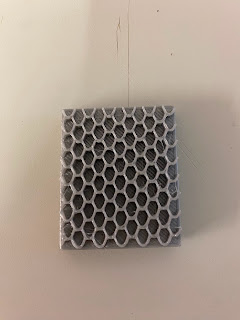My Lace Collar
My Lace Collar
For my piece, I wanted to design something that looked realistic but also could fit in with the constraints I had. These were: the space available (small enough to fit inside the room in Newstead Abbey), the time-frame, the theme and safety (i.e. could not harm someone, such as children, if touched or played with).
I next had think about how my piece would fit into the existing exhibition in place at Newstead Abbey: Lace Places. We were reserved a single room in the Abbey, with other artists placing their pieces around the other rooms and corridors. This meant that I was able to create a pice that stood on its own, it didn't have to related or in response to another piece of art.
For my collar, as I previously stated, due to my restraints I decided to design on a simple and symmetrical design that focused on the scalloped edges that were present in so many historical collars.
This is one example of a collar I looked at for inspiration. Although I wouldn't be able to learn the skills required to make such intricate details, I focused on the overall shape and what I could do with that.
Due to the process of learning a few lace stitches (through Micheal Dennis), I was very short on time so I decided to use the stitches I learnt making the flower, and incorporate them into my design. Unfortunately I forgot to take many pictures during the process of designing and making my collar so I only have a few.
At this stage, I had drawn out my design on some thicker paper, which I then photocopied incase I needed to restart my design. I then attached the paper to 3 layers of backing fabric, and laid the cordonnet using crouching stitches. I used red thread for all of stitches which penetrated the backing in order for them to be seen easily when I was placing my lace stitches.
For these first two sections (pictured above) I used corded single Brussels. For the other two sections on this first 'pyramid' I used corded double Brussels (pictured below). For the outer two pyramids I used Ardenza stitches, with the two middle pyramids filled with the Williamson stitch.
Then, to finish the design I top stitched the entire design, including the different sections in the first pyramid, using buttonhole stitches to secure the threads in place. I finished the piece by cutting away the backing, and finally using tweezers to pull out the extra loose threads. Using red crouching stitches made it a lot easier to not only see the threads I had to cut, but to then find the loose threads.
This is my collar in situ in Newstead Abbey. I am really pleased with how it turned out, especially due to my very small time window in which to learn the craft. This green felt it is placed on actually came from one of the curators at Newstead and I feel it really brings it together. Due to everything in the room being white, including the podium, the collar looked like it was drowning, and wasn't very eye-catching. The green backdrop really elevates the piece and makes it look more professional.







Comments
Post a Comment